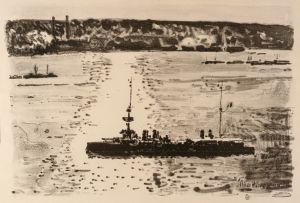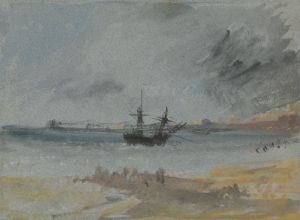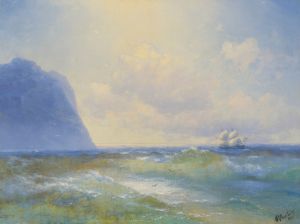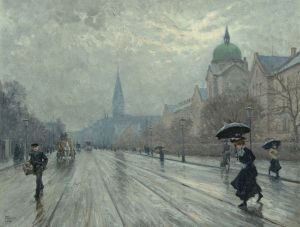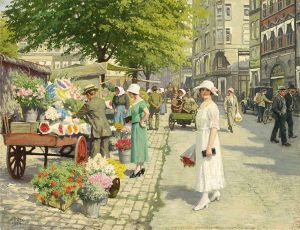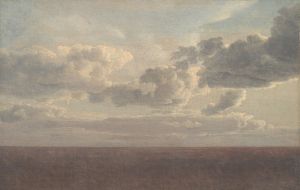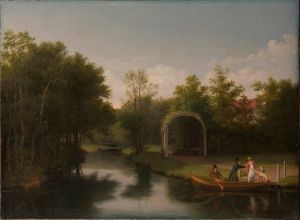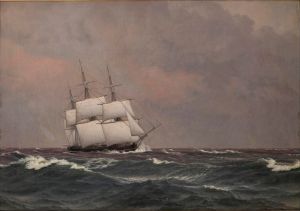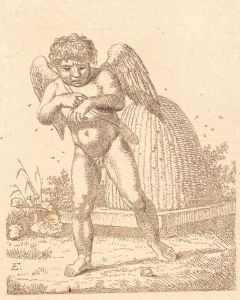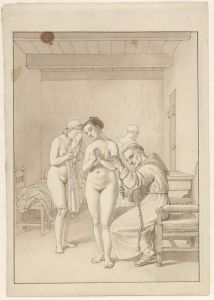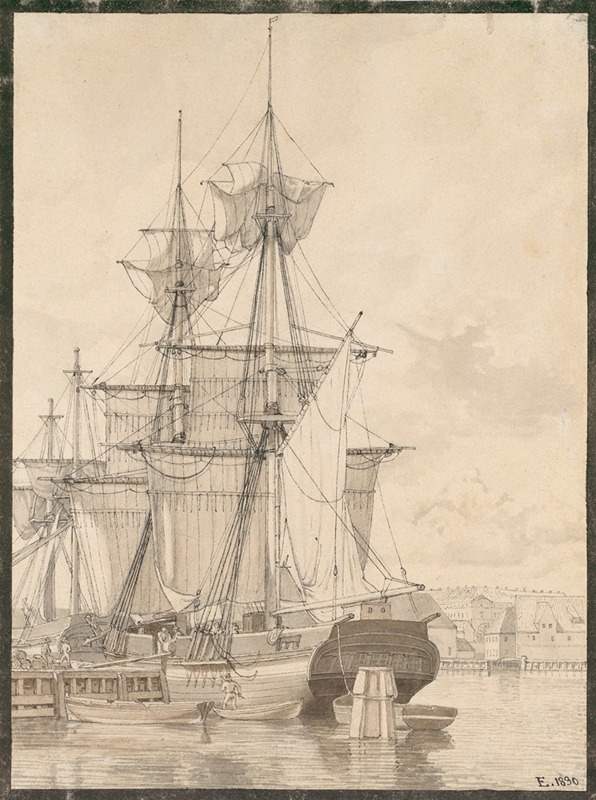
Sailing Vessels at Wilders Plads, Copenhagen
A hand-painted replica of Christoffer Wilhelm Eckersberg’s masterpiece Sailing Vessels at Wilders Plads, Copenhagen, meticulously crafted by professional artists to capture the true essence of the original. Each piece is created with museum-quality canvas and rare mineral pigments, carefully painted by experienced artists with delicate brushstrokes and rich, layered colors to perfectly recreate the texture of the original artwork. Unlike machine-printed reproductions, this hand-painted version brings the painting to life, infused with the artist’s emotions and skill in every stroke. Whether for personal collection or home decoration, it instantly elevates the artistic atmosphere of any space.
"Sailing Vessels at Wilders Plads, Copenhagen" is a painting by the renowned Danish artist Christoffer Wilhelm Eckersberg, often referred to as the father of Danish painting. Completed in 1831, this work exemplifies Eckersberg's meticulous attention to detail and his ability to capture the serene beauty of maritime scenes, a subject he frequently explored throughout his career.
Eckersberg was a pivotal figure in the Danish Golden Age of painting, a period in the first half of the 19th century marked by a flourishing of the arts in Denmark. He was instrumental in shaping the Royal Danish Academy of Fine Arts, where he taught and influenced a generation of Danish artists. His works are celebrated for their clarity, precision, and the way they reflect the natural world with a sense of calm and order.
"Sailing Vessels at Wilders Plads, Copenhagen" depicts a tranquil scene at Wilders Plads, a quay in the Christianshavn district of Copenhagen. This area was historically significant as a bustling hub of maritime activity, and Eckersberg's painting captures the essence of this vibrant port. The composition features several sailing vessels, meticulously rendered with an eye for the intricate details of their rigging and sails. The calm waters of the harbor reflect the ships and the surrounding architecture, creating a harmonious balance between the natural and man-made elements of the scene.
Eckersberg's use of light in the painting is particularly noteworthy. The soft, diffused light suggests a clear day, enhancing the peaceful atmosphere of the scene. This treatment of light and shadow demonstrates Eckersberg's mastery of the techniques he learned during his studies in Paris and Rome, where he was influenced by the works of French Neoclassical painters and the Italian landscape tradition.
The painting is also a testament to Eckersberg's skill in perspective, a technique he emphasized in his teachings at the Academy. The careful arrangement of the vessels and the receding lines of the quay draw the viewer's eye into the depth of the scene, creating a sense of space and dimension that is both realistic and inviting.
"Sailing Vessels at Wilders Plads, Copenhagen" is housed in the collection of the Statens Museum for Kunst (The National Gallery of Denmark) in Copenhagen. It remains an important work within Eckersberg's oeuvre, reflecting his dedication to capturing the everyday life and landscapes of Denmark with precision and grace.
Eckersberg's influence extended beyond his own works; he played a crucial role in the development of Danish art, mentoring artists such as Johan Lundbye and Christen Købke, who would carry forward his legacy. His paintings continue to be celebrated for their contribution to the cultural heritage of Denmark and their embodiment of the ideals of the Danish Golden Age.
In summary, "Sailing Vessels at Wilders Plads, Copenhagen" is a quintessential example of Christoffer Wilhelm Eckersberg's artistry, showcasing his ability to blend technical skill with a deep appreciation for the maritime life of his homeland.





